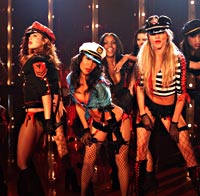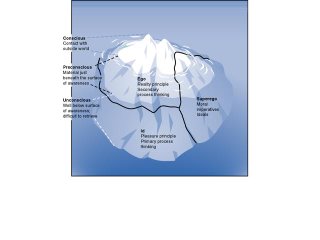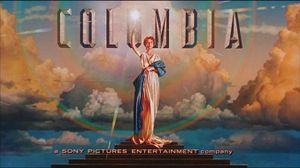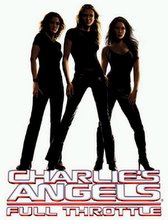Thursday, December 28, 2006
Main text: Charlie’s Angels-full throttle
Ø Angels in active roles-challenges patriarchy
Ø Action film- Male dominated genre=reversed
Ø Active however being objectified- e.g. treasure chest scene
Ø Post-feminismCharlie is a male- angels being controlled= reinforces patriarchy
1. Laura Mulvey- active/male and passive/female is challenged
2. Reinforces the male gaze=objectification
3. Todorov- has a non-linear narrative= has flashbacks
4. Has a resolution- angels (women) winning over villain (man and women)
5. Levi Strauss- Binary opposition between good vs. evil, women vs. man and hero(s) vs. villain(s)
6. Roland Barthes-enigma used to keep audience entertained
Kill Bill- Female protagonist, active role, sword seen as phallic object, gives her power and authority
Coyote ugly- objectification of women in a bar, dancing on platform, liquid poured over women, male spectator gains male gaze.
Catwomen- Female protagonist in active role rather than passive, wearing leather cat suit, tight reinforcing the male gaze, uses a whip at times seen as phallic object.
In conclusion most women in active roles are still being objectified in contemporary film; this concludes that society is still patriarchal.
Historical texts:
Alien- First film to feature a female protagonist in an active role, intended for a male, during the time of second wave feminism, little objectification.
Basic instinct- women seduces the cop to gain what she wants, has power using her body, challenges patriarchy, shown naked as scenes and men given chance to seek pleasure from this- male gaze.
Coffy- female cop in active role, has power, has authority, objectified due to the clothes she wears, revealing and reinforcing Mulvey’s theory.
Fatal attraction- Has a femme fatale in the film, tries to ruin the life of others, she is manipulative, gets obsessed, and receives the punishment she deserves, a resolution for audience, the usual ending of a femme fatale.
- Women may get objectified in films due to lack of female directors. This results in us as an audience seeing scenes from the perspective of the director, a male in return, the female is represented as an object for desire, to be looked-at-ness as Mulvey states. (R, A, Mulvey)
- This attention by the males upon the females could be seen as empowerment for the female, from a post-feminist point of view. The female controls the male as he gazes upon female’s body, thus giving female the pleasure as well as power over the man. She may be objectified, but from the view of the male. ( A, R)
- Reinforcing the ‘male gaze’ allows the women to distract, manipulate men, a role taken on by femme fatales in films. Femme fatales give a bad judgement on women as a result the home sound like a better place for them. They can use their bodies and looks to distract men in order of gaining something in return. An example is in Charlie’s Angels-full throttle, the scene in the treasure chest, the angels distract the men by giving the men what they want as a result this reinforces the male gaze. This example could be seen that women use their bodies as weapons such as for distraction in the example above. (R, Id, example)
- The clothes worn also encourage the reinforcement of the ‘male gaze’. The fetish and phallic objects used in films, especially in action films reflect Laura Mulvey’s theory. (M, Mulvey, G)
In order of objectifying women, the camera positioning and mise-en-scene is very well used. Slow motion is used in Charlie’s Angels-full throttle, I will mention how this was useful in gaining the gaze and other connotations within the mise-en-scene, e.g. Diaz is wearing white and Moore is wearing black. This can be followed by Todorov’s narrative theory as the angels promoted by the white (Diaz) win over evil in white (Moore) as a result a resolution is achieved. The audience are then given the chance to identify with the film as justice is given. (M, Mulvey, Strauss, Todorov, G)
I will follow this by mentioning the connotations of these colours and how the audience can identify with them. By doing this, I could mention Levi Strauss theory on binary opposition between good vs. evil. Sow motion is also used to create enigma as a result to keep audience entertained (M, Strauss, Barthes)
Kill Bill and Tomb raider etc… promote power for women (female power). This as a result promotes equality between men and women and challenges patriarchal society. These films are under the genre of action. This genre is associated with men, an active role and this being reversed in these films. (Pol, Soc, Id, G, R)
The action films where women are in active roles rather than the stereotypical passive roles have all been successful making a lot of money. The use of special features makes it an expensive film, a high budget Hollywood film, the successful institution called Columbia pictures, owned by Sony pictures entertainment. The film offers the audience to watch something different and women are finally getting noticed in society from contemporary films. (Econ, G, R, Soc, I)
Flashbacks are used in the film as a result has a non-linear narrative. The flashbacks help identify with the characters, as the audience are given the chance to bee the past about what the angels are like. They either challenge stereotypes on women such as Barrymore associated with cars, something men are associated with. (N, R, A)
Is there a ‘female gaze’?
The films Coyote ugly and basic instinct are different genres to the other films however theses films also create objectification of women. They are sexually objectified. However in basic instinct, there is a ‘female gaze’ as well as Mulvey’s ‘male gaze’. This is then developed in the latest casino royale; bond is coming out of the water, a scene previously shown by Halle berry. (R, G, Mulvey)
Is ‘male gaze’ bias?
The paragraph could then be extended by elaborating that the society could be seen as differently in terms of objectification. Females get objectified however we are still seeing men getting objectified as well as women, however more women than men. This female gaze did not exist before as a result… (R, Mulvey, Soc, His)
Conclusion...
I will answer my hypothesis from my introduction as well as answer the question using my text as my main exmaple. I willl back this up by giving examples and including theorists that are relvent.
Friday, December 15, 2006
What i learnt from the debate!!!
well, in films such as Charlies Angels, Catwomen, Kill Bill etc... (all action films) show women with phallic or fetish objects. This is the result of lack of femal directors, which the audience are then shown a film from a male point of view. Phallic or fetish objects range from whips to guns. They wear tight clothing while in these scenes giving the spectator erotic pleasure. They use their lookes to distract men to gain something in their favour. An example is the treasure chect scene in Charlie's Angels-Full throttle where they are pole dancing and distract the ''enemy' to gain a pair of keys for thier mission.
However, not only men are getting pleaure nowadays because there had been a role reversal resulting in the female gaze. An example is the casino royale film where bond is seen coming out of the water soaking wet, a role previously played by halle berry in reture the females gaining erotic pleasure. Women are in more active roles that before and they are becoming as successful as men. Halle berry is a successful actress who was the first black person to win an oscar for her role in a film. She didnt win this award due to her looks but her success as a career and this is evidence that objectification dont make celebrities successul. Curvy women are now being shown in adverts rather than skick thin people as a result this shows thats looks dont matter and dont make them look preety. As a result women are not objectified due to this and equality is present and women and becoming less subordinent to males in society.
Sunday, November 26, 2006
Laura Mulvey's theory is useful in my independent study and for all my texts. As you can see below I have explained will examples of sum scenes that reinforce the ‘MALE GAZE’ as a result follow Mulvey’s theory. Charlie’s angels are my main texts and in this film they use a variety of objects that can be considered as a PHALLIC object. The main trend I have found from all my texts is that the protagonists are FEMALE rather than the stereotypical male, as a result EROTIC pleasure is given to the audience/ SPECTATORS to keep them entertained. Most my texts are action films such as my main texts Charlie’s Angels-full throttle, kill bill and tomb raider. In these films the protagonist is the female and as a result it shows that females can be as powerful as male challenging the active/male and passive/female.
Females may be shown in a active role now however they are still being OBJECTIFIED in films and the meain reason is the lack of female directors resulting in male directors directing films and the audience shown the film from a male perspective.
Below I have explained how Mulvey's theory is relevent to all my texts and gave examples of how the audience are entertained.
Saturday, November 18, 2006
In all these films the spectator is given VOYEURISTIC PLEASURE in order of fulfilling the MALE GAZE. The women are being OBJECTIFIED though they are being shown in active roles rather than the stereotypical passive roles. By doing this it challenges a PATRIARCHAL society where women are no longer suborninate to men as a result this could result in MISOGYNY.

- In this film Angelina Jolie has PHALLIC OBJECTS that would give the SPECTATOR EROTIC PLEASURE. These symbols include
- -the gun around her- as a result the spectator will feel less ANXIETY.
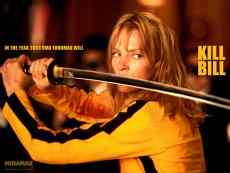
In this scene and the film, the PHALLIC object is the sword. This gives her power as she uses it to kill people. this would result in AXIETY because a phallic objects is used to get this power by a women.
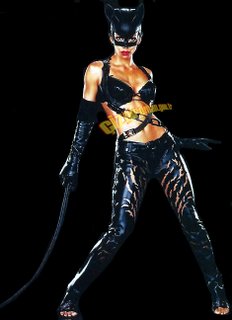
The plallic object the protagonist has in this film is the WHIP. The whip could also be seen as a FETISH OBJECT. This whip is a tool to give other pain, so SADISM is likely in this film.

In this film, Coyote ugly the phallic objects include the alcohol bottles and glasses. Other phaliic symbols could be the microphone the protagonist uses to sing with in order for the spectator gettin EROTIC PLEASURE out of it.
Thursday, November 16, 2006
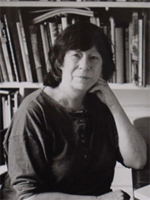
Laura Mulvey is a feminist film theorist. She has written a successful esssay called 'Visual pleasures and narrative cinema'.
She came up with a theory on how the audience are positioned so we see from the male perspective, called the 'MALE GAZE' . This results objectification, where women are seen as objects (sexually objectified). As a result, they are subordinate to men reinforcing patriachy (male dominated society). The spectator (audience) watch the female in a sexual way, in order of gaining erotic pleasure (sexual arousal), voyeuristic pleasure (sexual pleasure of watching someone else) and scopophilia (the pleasure in looking).

This is where Sigmund Freud's theory on psychoanalysis can come in and link in with what Mulvey is talking about. During the male gaze, anxiety can arise due to the idea of castration (remorval of male genital organs) on a women. This then can be filled by a phallic object (connotations of a penis) or a fetish object. This is likey to be seen in movies which follow the concept of the 'whore' and the 'madonna', where the whore dresses in a seductively way allowing the male spectators gettin pleasure by looking at them, though the whore usually dies at the end of the movie. This is where sadism can be introduced (pleasure from someone experiencing pain) as the whore should get punished and when she dies it is like a releif, where the spectaors are satisfied that someone bad gets punished. Narcissism can be seen by the hero as he we would want to be more like him and has the power, this allows the spectator to identify with the character.
Freud is a theorist of psychoanlatic, the founder of psychoanalysis. He had his own theory, where he analysed and was interpreting human behaviour, especially the mind. He came up with the idea of conscious and unconscious using a model of a iceberg. The top half of the iceberg that was visible and over the water was called the conscious and 1/10 of how conscious we were and the bottom called the unconscious and was about 9/10 of how un conscious we are. He said that repression was pushing down or the motion we push into the unconscious and the resistence which he described as to knowing or finding out the truth.
I think that what Mulvey is saying about the male gaze is true to a certain extent becasue its not seen in all text but only a few. Also, her theory is very old now and contemporary society has changed as a result postfeminism was introduced. As a result, her theory is challenged sometimes, especially in recent films that have a female protagonist who is also the hero and not shown in sexual ways, though males can get pleasure from this from the tight suits and the female fighting.
Saturday, November 11, 2006
Furthermore, Tarantino can also be accused of using the "bitchy" stereotype about women in kill bill. This is because Thurman's character murders or tortures former friends, 5 women. She tortures Sofie Fatale by cutting her limbs off and kills Copperhead infront of her own child. This reinforces the stereotype that women cannot get along with one another.
Feminist movement in the nineteenth century and early twentieth century, which primarily focused on gaining the right of women's suffrage. The term was not used during the time of the movement; the term was coined retroactively after second-wave feminism began to be used to describe a newer feminist movement- being able to vote and freedom of speech.
Feminist thought that originated around the 1960s and was mainly concerned with independence and greater political action to improve women's rights. By this time women and teenagers were getting more stronger.
Feminist movement that arguably began in the early 1990s. Unlike second-wave feminism, which largely focused on the inclusion of women in traditionally male-dominated areas, third-wave feminism seeks to challenge and expand common definitions of gender and sexuality- lesbians.
Thursday, November 09, 2006
Attainment
1= I understand the work that’s being done at the moment quite well.
Effort
2= this is because I put as much effort I could into the subject however I can put more effort. For example, for my blog work I have put a lot of effort in to it as I enjoy this area. In lessons I understand the work however I need to put a lot more effort in to my class-work.
Punctuality
1= my punctuality is good as I try and arrive to lessons on time and try and avoid being late. I also don’t take of much of school, only is I have a excuse such as an appointment or if I am ill, otherwise I attend most lessons so I don’t miss out on my work.
Submission and quality of homework
1/2= the homework I hand in had been good quality as I highlight all the sheets I receive and hand in homework most of the time. I always hand in the homework set that needs to be on the blog as I enjoy doing blog work.
Ability to work independently
1= I think I work well independently as this can be seen by looking at my blog research I have done independently so far for it.
Quality of writing
2/3= the quality of my writing is not that good however this is an accurate grade. I will know the quality of writing when we start doing more writing in lesson, such as for the school magazine.
Organisation of Media folder
1= I think my media folder is good because as soon I get sheets in lesson I put them in a folder so they don’t get lost. I also put my sheets in order of when I got them so they are in order and making it neater. I also bring all my sheets to lesson for both Med 4 and Med 6 so I could refer back to it and will have it with me when I need to have it for the lesson.
Oral contributions in class
2/3= I think that I need to contribute to lessons more when I no the answer however I do think I contribute more, or try to this year than last year, although it isn’t enough.
Standard of module 5 blogs
1= the standard of my module 5 blog is very good as I have kept up with all my homework as is good quality with a lot of detail. I have also done a lot of self directed research which will help me with my independent study. I have also tried to make it attractive my adding colour and have a lot of pictures on my blog.
Standard of Module 6 blog (Year 13s only)
1/2= This is because the work I have done so far on the blog is not as detailed as it should be however I do put my effort into it but not as much as I could. I also have added pictures and used a variety of fonts to make it look nice to look at.
list of three targets/areas for improvement:
- To contribute more in lessons when i know an answer
- Improve my blog for module 6
- Put more effort in class
Tuesday, November 07, 2006
http://video.google.co.uk/videoplay?docid=-1471996088770468263&q=adverts+on+women
An advert made for nike based around womens rugby/ girls rugby. This is the advery that challenges the sterotypes on womem where they are takig a more active roles than a passive roles by participating in a soprt like rugby, there we as an audience accociate with males.
http://www.youtube.com/watch?v=JYr3ev4CwiA
This is an advert i found that represent the main person, kylie as a whore, due to the way she is acting and the way she i dressed. This advert also reinforces Laura, Mulvey's theory on the male gaze. This is because she is not wearing much clothes and is revelaign her body for the audience to see, she is being objectified.
http://www.youtube.com/watch?v=M0dw0nmoMhY
http://www.youtube.com/watch?v=YRlGQvOxDwI
This is a traditional advert of a women in a stereotypical role of a housewife cleaning. This can be seen as she is cleaning the fllor with a vacuum and is very the stereotypical clothes women used to wear in th past when they cleaned with the apron round their hips.
Thursday, November 02, 2006
Columbia Pictures Industries, Inc. is a U.S.–based film and television production company, part of the Columbia TriStar Motion Picture Group owned by Sony Pictures Entertainment, which in turn is part of Japanese electronics giant Sony.

The Torch Lady in the color version of the Columbia Pictures logo, used in the late 50s and early 60s..
The predecessor of Columbia Pictures, CBC Film Sales Corporation, was founded in 1919 by Harry Cohn, his brother Jack Cohn, and Joe Brandt. The company's reputation was so low that some joked that "CBC" stood for "Corned Beef and Cabbage." Many of the studio's early productions were low-budget affairs; the start-up CBC leased space in a poverty row studio on Hollywood's Gower Street. Brandt was company president and handled sales, marketing and distribution from New York along with Jack Cohn, while Harry Cohn ran production in Hollywood.
2000s- some of the films distributed by columbia pichures...
-Charlie's Angels (2000, based on 1970s television series)
-Spider-Man (2002)
-Stuart Little 2 (2002)
-Gothika (2003, with Warner Bros.)
-Terminator 3: Rise of the Machines (2003, international distribution only)
-Spider-Man 2 (2004)
-The Grudge (2004)
-Are We There Yet? (2005) (co-production with Revolution Studios)
-The Longest Yard (2005) (co-production with Paramount Pictures and MTV Films, remake of -1974 Paramount Pictures film)
-Guess Who (2005, remake of 1967 film Guess Who's Coming to Dinner) (co-production with Regency Enterprises)
-The Legend of Zorro (2005) (co-production with Spyglass Entertainment and Amblin Entertainment)
-Memoirs of a Geisha (2005)
-Zathura (2005)
-Yours, Mine & Ours (2005) (co-production with Paramount Pictures, Metro-Goldwyn-Mayer and Nickelodeon Movies, remake of 1968 United Artists film)
-Christmas with the Kranks (2005) (co-production with Revolution Studios)
-The Pink Panther (2006, distribution only) (with Metro-Goldwyn-Mayer)
-The Da Vinci Code (2006) (co-production with Imagine Entertainment)
Monster House (2006) (co-production with ImageMovers and Amblin Entertainment)
-Casino Royale (2006) (co-production with Eon Productions and Metro-Goldwyn-Mayer)
-Spider-Man 3 (2007) (co-production with Marvel Entertainment)
Thursday, October 26, 2006
1. Gauntlett, David (2002): Media, Gender and identity. West 35th Street, NY: Routledge.
This book is useful to me because it mentions my film Charlies angles with a case study that will be usefull to me. It also talks about the ideal women and focuses on women throughout the whole book which is realted to my topic and can use some things he wrote when i talk about pleasure.
2. Tasker, Yvonne (2004): Action and adventure cinema. Madison Avenue, NY: Routledge.
As my film is an action film it will be relevent to me as it includes some topic i need to cover and mentiones most of my texts that i am covering and so this book will help me will my research.
3. Lacey, Nick (2000): Narrative and Genre key concepts in media studies. Hampshire, UK: Macmillan.
This book mentions the films that i will be looking at such as Aliens as this is the first film to feature a female protagonist that will be relevent to my study.
4. Blandford, Steve, Grant, Barry Keith, Hillier, Jim (2001):The film studies dictionary. Madison Avenue, NY: Arnold.
This book contains some words that i will be able to use for my independent study.
5. Sarder, Ziauddin and Loon, Borin Van (2000): Introducing media studies. St. Leonards, NSW: Icon books UK.
This book contains information on some of the theories and theorists that i will be useing for my independent study so it will be relevent to me.
6. Sullivan, Tim O', Dutton, Brian, Rayner, Philip (2003): Studying the media, An introduction third edition. Madison Avenue, NY: Euston Road, London: Arnold.
This book contains information on representation and mentions some on the film that i will be covering in my independet study. It also mentions some theories and theorists i will be using so this will beneft me when i need research.
7. Philip, Rayner, Wall, Peter and Kruger, Stephen (2004): Media studies:the essential resource. New fetter Lane, London:Routledge.
This book mentions information on representation and has information on my chosen text and other texts i will be looking at. It also mentions the theorists and theories that i will be using.
8. Cook, Pam and Bernink, Mieke (1999): The cinema book 2nd edition. Stephen St, London: British film institute.
This book contains a lot of information that i will be able to gather together and pick out relvent things that will be useful to me when writing my independent study.
9. Bennett, Jacquie (2005): Media studies AS & A2. Gosport, Hants: Longman.
This book contains alot of information such as women and film and theorits and their theories that i found usefull.
10. Lacey, Nick (1998): Image and Representation key concepts in media studies. Hampshire, UK: Palgrave.
This book focuses on representation and will be able to use this book when i talk about represnetation of women especially in films.
11. Branston, Gill and Strafford, Ray (2003): The media students book-third edition. Madison Ave, NY,USA: Routledge.
This book has information on my chosen texts and other texts i will be using to help me. It also mentions further information on theorists i will be using and theories and this will help me widen my resaerch.
12. Kaplan, E. Ann (1998): Women in film noir. London: british film institute (BFI).
13. Langford, Barry (2005): Film genre- Hollywood and beyond. Edinburgh: Edinburgh university press.
This book foucuses on hollywood films and my film, Charlies angels is a hollywood film. The book has a section i found useful which was on womens film. it talks about women films and the elements used with examples which i foud useful.
14. Nelmes, Jill (1996): An introduction to film studies- third edition. London: Routledge.
This book was useful to me because it contains a lot of information on women and stereotypes on women and their role. This will be useful as my text,Charlies angels challenges the stereotypical roles of women.
15. Gilligan, Sarah (2003): Teaching women and film. London, UK: British film institute (BFI).
This book is entirely focused on women and a section helped that talked about my text and the pleasures the film gives the audience so this will help me as it is realted to my independent study question.
Books i need to look at:
16. Cook, Pam and Dodd, Philip (1993): Women and film: "sight and sound" reader.
This book is on women and may include useful information i will be able to use for my independent study.
17. Pitkin, Hanna Fenichel (1967): The concept of representation. publisher: University of Calafornia.
This book focuses on representation as my topic is on representation on women, it may include relevent information on representation on women or similar.
18. Delamont, Sara (2001): changing women, unchanged men?. Buckingham, UK: Open university press.
This book is based on how women have changed from the past to contemporary society and how men have stayed the same. This may be useful to be as i will be talking about roles of women and how they are changing.
Friday, October 20, 2006
The phenomenal success of the James Bond series in the 1960s and 1970s, helped to popularise the concept of the action film in recent years. The early Bond films were characterised by quick cutting, car chases, fist fights and ever more elaborate action sequences. The series also established the concept of the resourceful hero, who is able to dispatch the villains with a ready one-liner.
Despite the success of the Bond films, the action film did not become a dominant form in Hollywood until the 1980s and 1990s, when it was popularized by actors such as Arnold Schwarzenegger, Bruce Willis and Sylvester Stallone. The 1988 film Die Hard was particularly influential on the development of the genre in the following decade. In the movie, Bruce Willis plays a New York police detective who inadvertently becomes embroiled in a terrorist take-over of a Los Angeles office block. The film set a pattern for a host of imitators, like Under Siege (1992) or Air Force One (1997), which used the same formula in a different setting.
Action films tend to be expensive requiring big budget special effects and stunt work. Action films have mainly become a mostly-American genre, although there have been a significant number of action films from Hong Kong which are primarily modern variations of the martial arts film. Because of these roots, Hong Kong action films typically center on acrobatics by the protagonist while American action films typically feature big explosions and modern technology.
Current trends
Current trends in action film include a development toward more elaborate fight scenes, perhaps because of the success of Asian martial arts elements, such as kung fu and karate, in Western film. Actors in action movies are now much more skilled in the art and aesthetic of fighting than they have been in the past, apart from a few acknowledged fighters like Steven Seagal. Now, a distinction can be made between films that lean toward physical, agile fighting, such as The Transporter, and those that lean toward other common action film conventions, like explosions and plenty of gunfire, such as Lethal Weapon, although most action movies employ elements of both.
Several of the common action film conventions saw their birth in the release of James Bond series (containing many of the original elements of spy movies still seen today). One popular element is the car chase, a feature that is almost standard in action films. Bullitt and The French Connection were among the earliest films to present a car chase as an action set-piece.
Another genre staple employed by many action films is a suspenseful climax centered around a Mexican standoff between two leading characters.
Feminist theory
Feminist film theory has been used to analyze action movies, owing to their rare variance from a core archetype. The separation between the physical male who controls the scene and the look and the female, who is almost always the object of the look is very clear in most such films. Although female characters in most action films are nothing more than objects, a prize for the winner, hostages, loving wives and the like, there has been a move towards stronger female characters such as those in works by James Cameron and Kathryn Bigelow. However, in most action movies since the 1970s, the female character in an action movie is usually portrayed as incompetent and lacking in good judgment. These characters tend to unintentionally make life harder for the hero.
Female leads
The science-fiction action/horror movie Alien was the first action movie to feature a strong female protagonist, independent of a guiding male lead Alien has thus been considered a prototype for the Girl Power-effect that occurred in Hollywood towards the early 2000s when more and more action-movies with powerful female leads appeared from the comedic (e.g. Charlie's Angels) to the mainstream martial arts film (e.g. Kill Bill).
Gazing and seeing someone gaze upon another provides us with a lot of information about our relationship to the subjects, or the relationships between the subjects upon whom we gaze, or the situation in which the subjects are doing the gazing.
The mutuality of the gaze can reflect power structure, or the nature of a relationship between the subjects, as proposed by Catherine Lutz and Jane Collins, where this "tell[s] us who has the right and/or need to look at whom".
Gazing can often reflect emotion without speech - in Western culture, continued staring upon another can be quite unsettling upon the subject.
Although it may appear that "gaze" is merely looking at, Jonathan Schroeder tells us that "it signifies a psychological relationship of power, in which the gazer is superior to the object of the gaze". The gaze characterizes and displays the relationships between the subjects by looking.
This idea forms a basis of feminist analysis of texts.
Gaze and feminist theory
The gaze is used in feminist theory as a means to demonstrate power asymmetries by what is termed male gaze, whereby a man gazes at a woman. Such feminist theorists posit that since it is almost always the female who is being gazed upon by the male, the man exhibits power over the woman.
This form of gaze can be the sexual gaze by a man towards a woman (so called "making a pass"), or the gazing of an image of a woman in some text or in the media. Laura Mulvey identifies the action of 'possessing' a gaze as being an intrinsically male (the "male gaze"), and identifies the action of being gazed upon with the female. This relates to binaries of male/active, female/passive.
This idea of power relationships within the gaze can be continued to analyse gendered power relationships in the depictions of women in advertising. Some advertising presents women in a sexual manner, and it is argued that this degrades women because of the power that the gaze provides for heterosexual men viewing these advertisements. Furthermore, Erving Goffman in Gender Advertisements describes that in his study the placement of men was higher than that of women in an advertisement. This positioning forces the gaze asymmetrically, the male must look down to the woman, and the female up to the man.
Responses to "male gaze"
Male gaze in relation to feminist theory presents asymmetrical gaze as a means of exhibiting an unequal power relationship; that is, the male imposes an unwanted gaze upon the female. However, this may not necessarily be the case; many societies have women who enjoy being gazed upon, models and beauty pageants in Western society for example seem to welcome the male gaze. Some second-wave feminist viewpoints would argue whether these women are actually willing, noting that they may be merely seeking to conform to the hegemonic norms constructed to the benefit of male interests that further underline the power of the male gaze. Evolutionary biological explanations for the male gaze also exist.
The question of whether a female gaze exists in contrast to the male one arises naturally in considering the male gaze. Mulvey, the originator of the phrase "male gaze", argues that "the male figure cannot bear the burden of sexual objectification. Man is reluctant to gaze...". Nalini Paul describes Wide Sargasso Sea, where the character Antoinette views Rochester and places a garland upon him to appear as a hero, and "Rochester does not feel comfortable with having this role enforced upon him; thus he rejects it by removing the garland and crushing the flowers."
In the perspective of male gaze as merely possessing a gaze, the position of a female possessing the gaze is then the female assuming the male gaze. Eva-Maria Jacobsson supports this by describing a "female gaze" as "a mere cross identification with masculinity".
However, disregarding the viewpoint of gendered possession of gaze as proposed by Mulvey above, there is evidence to support a view of a female gaze - at least as an objectification of men - in texts such as advertisements and teenage magazines. The view that men are somehow reluctant to be gazed upon was also not necessarily supported, for example, at an exhibition called The Female Gaze, where female artists studied the male form. Therese Mulligan mentioned "[t]o get these men who had leered at her on the street to strike these poses was amazing. And you could tell that they loved being looked at by her. These guys aren't attractive, but they sure think they are."
The gaze can also be directed toward members of the same gender for several reasons, not all of which are sexual, such as in comparison of body image or in clothing.
Wednesday, October 18, 2006
Literally, the love of looking.
The term refers to the predominantly male gaze of Hollywood cinema, which enjoys objectfying women into mere objects to be looked at (rather than subjects with their own voice and subjectivity). The term, as used in feminist film criticism, is heavily influenced by both Freudian and Lacanian psychoanalysis.
Marxist feminism is a sub-type of feminist theory which focuses on the dismantling of capitalism as a way to liberate women. Marxist feminism states that capitalism, which gives rise to economic inequality, dependence, political confusion and ultimately unhealthy social relations between men and women, is the root of women's oppression.
According to Marxist theory, in capitalist societies the individual is shaped by class relations; that is, people's capacities, needs and interests are seen to be determined by the mode of production that characterises the society they inhabit. Marxist feminists see gender inequality as determined ultimately by the capitalist mode of production. Gender oppression is class oppression and women's subordination is seen as a form of class oppression which is maintained (like racism) because it serves the interests of capital and the ruling class. Marxist feminists have extended traditional Marxist analysis by looking at domestic labour as well as wage work in order to support their position.
Male: Tough, Hard and Sweaty
Female: Fragile, Soft and Fragant
Representation of femininity
Feminism has been a recognised social philosophy for more than thirty years, and the changes that have occurred in women's roles in western society during that time have been nothing short of phenomenal.
Representations of women across all media tend to highlight the following:
beauty (within narrow conventions)
size/physique (again, within narrow conventions)
sexuality (as expressed by the above)
emotional (as opposed to intellectual) dealings
relationships (as opposed to independence/freedom)
Representation of masculinity
'Masculinity' is a concept that is made up of more rigid stereotypes than femininity. Representations of men across all media tend to focus on the following:
Strength - physical and intellectual
Power
Sexual attractiveness (which may be based on the above)
Physique
Independence (of thought, action)
These are components of a wesite on Gender and Representation:
http://www.mediaknowall.com/gender.html
Saturday, October 14, 2006
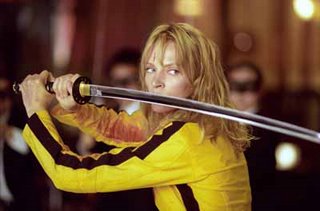
My blog buddy from 13C is KIRANJIT
‘I’m The Deadliest Women In The World’, in particular reference to Kill Bill: Volume Two (2004) by Quentin Tarantino, how have women's roles in action films changed over the recent years?
Kiranjit’s independent study is focusing on the representation of women in action films and how they have changed, as the media typically associate the male to be the protagonist/dominant figure in the film. Her main text will be 'Kill Bill Volume Two' (2004) by Quentin Tarantino. Other texts that she will mention that relates to my study are Charlie's Angels: Full Throttle' (2003). She says in all these films women are represented differently for example in my main text, she says 'Charlie's Angels' women are represented as dominant and in control.
The areas of overlap in our studies are she has similar key words to me from the essential word dictionary such as binary oppositions, male gaze and the main key word I have used a lot is patriarchy.
She is even referring to my main text, Charlie’s angels- full throttle and I will be mentioning points on women becoming more in the active roles which are linked to her title.
We also mention similar theorists and theories such as Laura Mulvey and the feminist theory.
Her other text is on Tomb raider, which is also a text that I will be referring to.

My blog buddy from 13D is DINVEER
‘You Can’t Force A Woman Against Her Will’- with reference to ‘House of Flying Daggers’ (2004 d. Zhang Yimou), have women become the protagonists in action/adventure movies OR are they still perceived as inferior to men?
Her independent study will be focusing on the representations of women and their roles in action films. She has looked at reviews on ‘House of Flying Daggers’ and other texts which she will be referring to such as ‘Kill Bill’ which is one of the texts that I will be using for my independent study. She will be concentrating on the subject of the feminist theory by Laura Mulvey and her essay ‘Visual Pleasure and Narrative Cinema’.
The areas of overlaps in our independent studies are that she has similar key words such as kung fu, which is used to fight the villains, male gaze and protagonist.
The genre of her main text is action, which is the same genre of my main text, and she talks about women becoming protagonists in action films, which is a key issue I am going to be talking about in my independent study.
She also has similar theorist and theories that I have used for my independent study so I will be able to get information that will be useful and she will be able to do the same.
Both our films include female protagonists in action films so the male gaze theory will be applied and the active male and passive female theory will get challenged by the texts.
Sunday, October 08, 2006
The words that are relevant for my independent study:
1. Barthes, Roland (1915-1980)
He was a French academic responsible for applying and extending Saussure’s work on semiology to contemporary culture.
He explores the language of signs, their combinations paradigm choices into a construction of meanings and concept of denotation, connotation and myth which is applied to film.
Barthes also explores the structure of narrative, identifying 5 different codes which engage the audience. The most important is the enigma code and the action code, semic, symbolic and cultural codes.
The most important to my independent study is the enigma code. This is used throughout the film to engage the audience and keep them attracted to watch what happens next, as a result getting a large audience.
2 .Binary opposition:
This is a term used by Claude Levi-Strauss as part of an argument that narratives are structured around oppositional elements for example good ad evi, life and death, night and day, raw and cooked.
In contemporary media narratives, black and white, hero and villain represent binary oppositional forces. He says the audience is attracted by the dynamics of this conflict with the possible variations leading usually to the ultimate triumph of good.
Audiences are positioned in narratives to take sides and rewards by the success of the side they identified is positioned with.
This key word is relevant to my independent study because my film contains a lot of binary oppositions such as Good and Evil, Black and White, Hero and Villain, Male and Female.
3. Femme fatale:
This is a French film noir theory. The theory is that a female character uses her sexuality, often in devious, disreputable, secretive ways, to achieve the ends she desires.
The femme fatale is a dangerous character whose sex appeal often disarms the male protagonist and allows her to manipulate the action.
This is a useful key word because it relates to Charlie’s angels-full throttle, coyote ugly, American pie-the wedding well. In those films the women are seen as sex objects to get what they desire.
In Charlie’s angels 2, the strip club, they are dancing in a seductive way so the male audience are distracted and so they can get something for their own benefits, they are using their bodies to distract the males.
4. Hollywood
Hollywood is part of the district of Los Angeles, California. This is the centre of the US film industry during the golden age of the studio system.
Hollywood remains a playground for the super rich and their glamorous celebrity’s lifestyle.
This key word is useful to my independent study because my main text, Charlie’s angels- full throttle is a Hollywood text and casts many celebrities to make it a successful film.
5 .Levi-Strauss, Claude
French structuralist anthropologist whose analyse of human culture. His narrative theory of binary oppositions is based on the essentials differences between such concepts as culture and nature, raw and cooked, good and evil. Narratives are based on oppositional and resolution of conflict. Audiences are positioned on the side that justifies their own cultural values and resolution reduces underlying anxiety about threats to their way of life.
His theory is relevant to my independent study as I have explained above why due to the binary oppositions that arise throughout the text.
6. Marxist feminism
This is seen from a feminist perspective which sees capitalism as the principle source of gender inequalities.
In a capitalist class hierarchy, women are seen as being subordinate to men and serving the male workforce in terms of low paid, low status employment and unpaid domestic labour and child rearing.
Domestic violence against women is seen to be result of the powerless male workforce. The media serves the interest of capitalism by reinforcing traditional gender roles and supporting the status quo created by the dominant ideology.
This key word is useful because it challenges this theory however was present in the past and I can use this theory to compare the past against the future according to gender roles and representation on women.
7. Mulvey, Laura
A feminist academic and media and film critic, responsible for developing theories of the male gaze in her 1975 essay ‘Visual pleasures and Narrative cinema’
Her theory is useful especially her essay on the male gaze. I also think her theory on passive female and active male is useful as my text challenges the theory as the females are the hero and protagonists.
8. Patriarchy
A male domination of the political, cultural and socioeconomic system.
Under patriarchy, male perspective and male achievements are valued and rewarded at the expense of the female. Female contributions to society are ignored and women are culturally and economically invisible, being defined solely by their relation to men.
Patriarchy is an important assumption behind some feminist film criticism, which sees the male domination of film discourse as evidence in the male gaze.
9. Scopophilia
This is a term used by the psychologist Sigmund Freud to describe ‘the pleasure of looking’
The term is used by Laura Mulvey in the development of her ‘male gaze’ theory in her essay Visual pleasure and narratives cinema.
10. Synergy
This is the coming together of two separate media texts in such a way as to benefit both.
Synergy usually means that the combination of elements has a greater effect than the individual elements would have alone. With media texts, for example this can mean that the simultaneous release of a film and a film sound track will stimulate greater consumer interest than if the products had been released separately.
This key word is useful to because my chosen text, Charlie’s angels full throttle has a soundtrack called independent women by Charlie’s angels but also in my other texts such as Coyote ugly, which LeAnn Rimes called cant fight the moonlight.
Friday, October 06, 2006
The research I did myself for my independent study is as follows:
Ø I added a plot summary so people who read my blog are aware of what the film (Charlie’s angels-Full trottle) may be about.
Ø http://www.killermovies.com/c/charliesangels2/
This is a website I used with information on the film including pichures and clips from the film and characters, trailers and the director.
Ø http://www.screenonline.org.uk/film/id/824060/index.html
This website is for the screenonline website that I found useful as it is based on women and film and mentions representation on women.
Ø I put up a pichure of Charlie’s angels behind a flaming background because I thourght it looked nice and would make my blog look interesting to look at.
Ø I chose 3 pichures from the film that would really help me answer my question on each protagonist of the film, then added a brief description of why they are on my blog and how they are useful.
Ø Women in the 1950’s. This was independednt research that I found on women and how they were seen in that year which will be helpful when comparing.
Ø Women in the 1960’s(TWICE because I found more useful information)
Ø Found 5 reveiws on the film and decided to post them up, if it may help anyone else.
Ø The feminist theory was a theory I was going to use so I decided to get some research on it and post it up.
Ø Women in the 1970’s.
Ø A pichure of the villain for people who havn’t seen the film.
Ø A website on Laura Mulvey’s theory which will help me in my independent study on answering the question.
Ø I got a pichure of a book that will be useful to me by David Gauntlett and the name of the book.
Ø I got websites on theories such as marxism, feminist theory and a hegenomy website for information.
Ø I then got a theorist for the marxism theory because he focuses on hegenomy.
Ø Women in the 1980’s.
Ø Women in the 1990’s
Ø I got pichures of the other texts I will be using and pichure that will be helpful for my independent study and I explained why these clips from the film are useful.
Ø I got a pichure of a protest for equality for males and females.
Ø Women in the 1970’s (again!!!) but on work and equal pay.
Ø http://www.isis.aust.com/iwd/stevens/70s80s.htm
this website is on women in the past and what was happening in that decade.
Ø Women in 2000 on working and statistics on how many women now work compared to before.
Ø A pichure of the 3 angels together for charlies angels-full throttle
Ø A pichure of a media studies AS and A2 book that I will be using for my independent study.
Ø 4 websites that I found on women that will be relevent for my independent study.
Ø A pichure on a book called ‘visual and other pleasures’ by Laura Mulvey with a mini description of the book.
Ø http://www.screenonline.org.uk/film/id/824016/index.html
I used this website and got a msall pasage from it that is relevent to my iondependent study on women. I also posted a reason of why I posted this website.
Monday, October 02, 2006
Scene at the STRIP CLUB!!!!
The scene starts off as a pan shot of the outside of a strip club. We are then taken inside to the strip club called the treasure chest. The treasure chest can connote undercover, secret and mystery. The angels are there to get something from the villain while undercover so it related well with the name. The music starts off with fingers clicking. This builds tension and suspense because the audience are unaware of what they are up to or what they are going to do. The music is very jumpy at first, creating a welcomed and warming atmosphere. This is then changed to the pink panther song and are dancing to please the men reinforcing the ‘male gaze’. The pink panther song can be associated with a suspenseful and creates the atmosphere of something sneaky as a result building tension and enigmas (Barthe’s enigma codes). This relates to the angels and the part they play in the scene. They are being sneaking around to get what they want using their bodies. The music is parallel to the scene and diegetic on screen music is used to the audience fell as though they are there because whatever music they here, the audience can hear.
The colour red is used throughout which symbolises the themes of love and romance. Reflects the scenes of them flirting with the enemy to get what they want. A variety of shots are used in the scenes such as a high angle shot used when the girls are together and showing the arses to the men. The high angle shot can represent power to the audience rather than the angles because it seems as though we are positioned to be higher than them. It can also represent dominancy of men because men would enjoy watching the scene are higher than the angels who are dancing around showing flesh as a result reinforcing a patriarchal society.
The men are cheering the girls on the stage who are performing for the men, reinforcing patriarchal society because it shows that men have the power and authority over woman. The facial expressions of the men and the dancers are smiling as if they are enjoying what they are doing. The type of clothing they wore was black, netted, short and leather. This is the ideal clothes of what men would enjoy so it entertains and pleasures men. They are using their bodies to please men and for their own benefits so they think their bodies are like a drug where they can achieve anything if the men are pleased.
The genre of the film and scene is of action and can tell this because they are on a mission which is a convention of an action film. Romance can also be a genre. The final genre can be adventure. The iconography used is the whip, blindfold and a pole. These are all conventions seen in romance films. The iconography can represent woman dominance because they are controlling men using them therefore challenging a patriarchal society.
The females in the scene are being represented as sex objects. This means that they are in the passive role rather than the active role which is what the protagonists are in actions films. As they are in the passive roles they are conforming to the historical woman who are seen to follow the men and in the passive role. This leads to the ‘male gaze’. The males in the strip club cheering on the woman are watching the woman entertain them for their own pleasure so the women are seen as ‘objects of desire’. Stereotypes are reinforced in the scenes such as where Cameron Diaz does the stereotypical ‘airhead’ giggle and blink innocently being the subject of the ‘male gaze’. The scene is constructed to entertain the male audiences but the females to sympathise with the woman asking themselves “what are they doing”?.
The primary audience of the films would be males and females of the age of 17 and over. This is because anyone under would not understand the scene well. The male are target audiences because of the ‘male gaze’ and the scenes that are suitable for them to watch for their pleasure and entertainment. Females would be the other target audience because of the dominance such as the females being protagonists in the film changing the normal male as being in the active role challenging patriarchy. The secondary audience would be fans of the characters and fans of the genre. Ethnic minorities are used to show that all people are as pretty as each other plus the protagonist Alex. Voyeurism for males on woman is seen for their pleasures.
Multi-culturalism is seen to reflect modern society as countries like America are becoming more multi- culturalism. Women have become as equal as men so it challenges patriarchy.
A closed narrative is used with a resolution for the scenes which is when they manage to get the keys and pass from the villain for the Todorov’s theory. A linear narrative is used in that seen but not in the entire film. Narrative roles are present in the scene and binary opposition during the confrontation with the villain. Enigma codes are used throughout the scenes as the audience are unaware of what’s going on or what they want to do until they have done it.
Cameron Diaz is shown as the ‘dumb’ blond girl who is stereotypical of blonds to be represented. She is the main target who in the scene is getting the most attention and is shown as a distraction as she is shown naked in the scene and is shown in a big glass where she is pouring liquid over herself reinforcing the ‘male gaze’. The scene would have cost a lot of money because the pussycat dolls featured dancing in the background and a lot of expensive props were used such as the massive glass Diaz was sitting in.
The women dancing are shown to have power to a certain extent because they use whips and blindfolds which are used for leadership purposes. In the past the men had the power and authority to control women, placing them in the active roles and the females in the passive roles, however in the scene the angels are in the active roles and the protagonist, changing gender roles in contemporary society.
Friday, September 29, 2006
It is widely felt that female characters in film have been restricted to the easy categories that classical narratives and familiar genres demand of them (the typical complaint is that women in films are either 'virgins, mothers or whores'). There is certainly some truth in this view. However, across the history of British cinema we can see the development of an impressive variety of female characters and protagonists.
http://www.screenonline.org.uk/film/id/824016/index.html
This is taken from the screenonline website on woman being the protagonists in films recently. It gives information such as how more females now have the protagonists part.
Below shows the amount of money Charlie's angels 2 made in a chart of 100 films. It came 35 telling me that it was a successful film.
32.Aladdin
$21,142,730,5969
33.Enemy of the State
$20,990,391,8038
34.The Lion King
$20,763,220,9428
35.Charlie's Angels: Full Throttle
$20,523,363,5098
36.A Time to Kill
$20,292,806,230937
FURTHER INFORMATION!!!
Released in US
June 27, 2003
Total US Gross
$100,814,328
Production Budget
$120,000,000
Prints and Advertising Budget
$40,000,000
Worldwide Gross
$227,200,000
MPAA Rating:PG-13 for action violence, sensuality and language/innuendo
Running Time:106 minutes
Highest Combined Star Gross:35
Franchises:Charlie's Angels
Genres:Gratuitous Cameos, Visual Effects
Distributed by:Sony Pictures
Source:Sequel
Major Genre:Adventure
Country:United States
Production Method:Live Action
Creative Type:Contemporary Fiction
Director:McG
Thursday, September 28, 2006

This is a pichure of Laura Mulvey!!!
Laura Mulvey (born August 15, 1941) is a British feminist film theorist. She was educated at Oxford and is currently professor of film and media studies at Birkbeck College, London She worked at the British Film Institute for many years before taking up her current position.
Laura Mulvey's theory is relevant to me because her theory is on the 'MALE GAZE' and could be useful as my independent study focuses on representation of woman and how they are seen as sex objects to entertain and pleasure men.
Mulvey's best known for her essay on "visual pleasures and narrative cinema". She argues that in Hollywood cinema males are there for the figure of the woman on screen as the object of desire. Viewers are made to identify with the protagonist of the film, who tends to be male. Meanwhile, female characters are, according to Mulvey, coded "to-be-looked-at-ness"
She also mentions the active/male and passive/female leading to the 'male gaze'. In my chosen text Charlie's Angels 2 they are shown to entertain men using their bodies such as when they pole dance to distract the villain.

